2011 | Forum
Fighting Over Familiar Territory
Family relations and family conflicts form a thread running through this year's Forum programme. In the interview section head Christoph Terhechte talks about the intuitive aspect of his work as a curator, the politics of documentary film and an almost forgotten Japanese director.
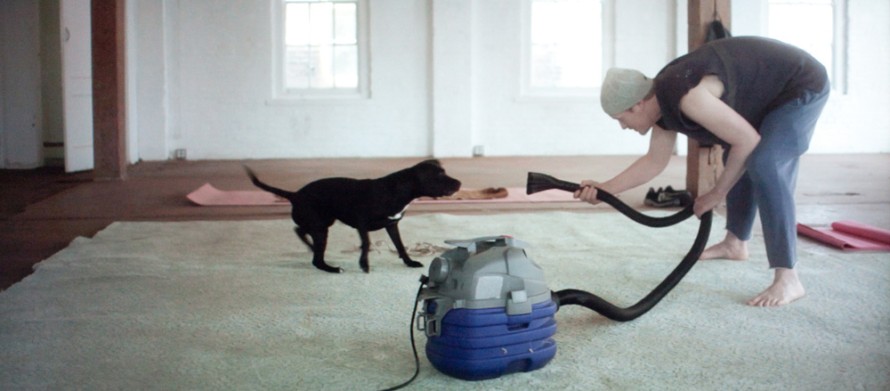
Utopians by Zbigniew Bzymek
Content-wise, audiences will encounter a wide variety of family situations and problems in this year's programme. Is this more about depicting the collapse of traditional values or more a return to the centrality of family obligations by the individual?
'Return' sounds reactionary to me, if it doesn't contain new aspects, a new definition of what family is. In the American film Utopians this is the case. The director Zbigniew Bzymek shows how a man makes together an alternative family with his lesbian daughter and her schizophrenic girlfriend. The characters begin an attempt at self-healing in a psychologically sick society. Utopians tries to rethink the model family, even if the film presents a truly desolate reality.
Looking at the programme, one has to say that many of the films describe such desolate situations. They do this in myriad forms and link the family situation to socio-political developments. Os residentes (The Residents) by Tiago Mata Machado also addresses a new version of the family by showing a situation that resembles a family situation. The film depicts the residents of a building whose life together is a kind of programme of actionistic happenings: before the demolition of the building they occupy the place to fill it with spirit and culture. Machado is a young Brazilian director who references early Jean-Luc Godard and takes a very playful approach to cinematic form. Just like the building's residents are characters who try to turn their life into a big game - and create a neo-familiar context.
Diverging life concepts, family understanding
Can these family situations also be described as generational conflicts?
That is also an aspect. Besides Utopians, there are three further films that deal with generational conflict. In Dom (The House) by Zuzana Liová a father wants to build his daughter a house without understanding that she has very different ideas about the future than living in her home village. The film observes the conflict between different generations' ideas about life.
In Jan Krüger's Auf der Suche (Looking for Simon) Corinna Harfouch travels to Marseille to look for her son who has suddenly disappeared. She discovers that her child is a very different person than she thought.
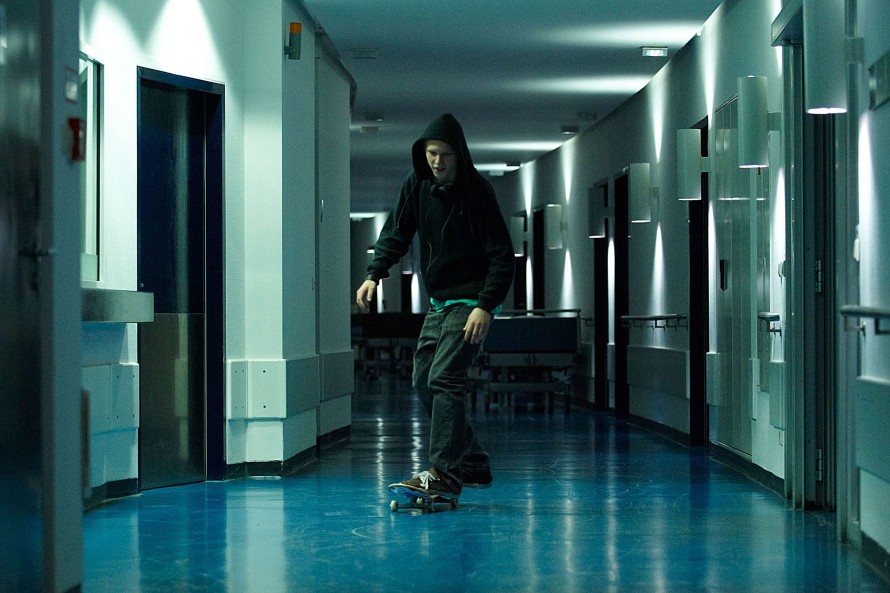
Kai Hillebrand in Swans by Hugo Vieira da Silva
Swans by Hugo Vieira da Silva can also be positioned within the context of generational problems: father and son return to the mother who is lying in a coma. The family hasn't been together for a long time and father and son don't just have to come to terms with this situation but have to learn to communicate with one another. The son travels to totally new surroundings. He was living in Lisbon and suddenly finds himself in an anonymous housing development somewhere beyond Neukölln in Berlin. He has to create new space for himself and he does so through fetishes. Even the mother's comatose body becomes a fetish. Da Silva employs an engrossing cinematic narrative method, that is devoted to the theme of fetish - beyond the sexual - as a means of communication.
And so the idea of family is the central thematic field of this year's Forum programme?
Yes, a significant number of other films also address the theme. Even the Swiss film Day Is Done by Thomas Imbach is a film about family. The story is told through messages left on an answering machine. At first the viewer notices only the details: the call of a woman who is disappointed because the main character doesn't phone back and so on. Over time these breaks form a greater context: a being is at stake, which we experience as time-lapse: The woman gets pregnant, the child is born and she accuses the man of not caring enough. At some point the child is old enough to use the telephone and at the end of the film the child is almost grown up.

Sandra Hüller in Brownian Movement by Nanouk Leopold
The Dutch film Brownian Movement directed by Nanouk Leopold shows us a happily married couple that almost breaks up because the women leads a perverse sex life - in the Freudian sense. She has sex with her own patients in a rented flat and selects these men very carefully: they must have remarkable features, they are extremely fat or extremely hairy. She organises her affairs as if they were experiments, as if they were participants in medical trials. When her intimate meetings are discovered, her family life is severely endangered.
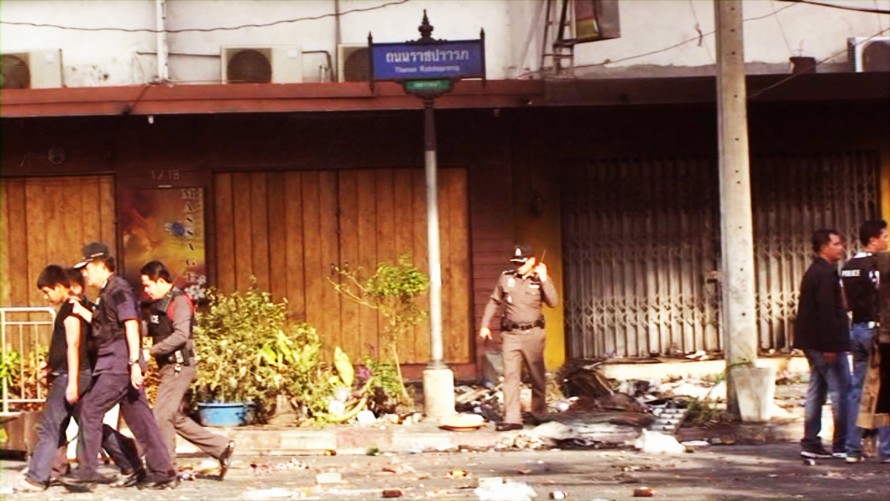
Poo kor karn rai by Thunska Pansittivorakul
The instinct of characters and the instinct of the curator
With such films in the programme do you want to place an emphasis on peoples' libidinousness or gender themes?
Partially, we are reacting to the tendency to make this libidinousness the subject of films. In part this topic is also a certain perspective to take on motifs such as love, lust, intimacy and family relations. The need to deal with these human micro-structures flowed into our section. These are very existential questions, which can either be treated on a very private level as in Brownian Movement or as a building block of a societal debate - as in Poo kor karn rai (The Terrorists), in which the director Thunska Pansittivorakul links homosexual desire to the political situation in Thailand.
Is this thread running through the programme the result of conscious planning?
One rather bases one's decisions about what films fit into the programme on instinct. Only later does one begin to realise what kind of foundation you have laid, upon which you have built up the final programme. The thread isn't the result of randomly selecting films. Instead one works intuitively from the beginning, even if, while still in a certain phase of conception, you can't really put your finger on what the films have in common. I believe that part of curatorial work occurs unconsciously, so you have to later become aware of what you created. In the end you know very well and know exactly what pieces of the mosaic are still missing so that the facade makes a coherent impression.
Documentary-aesthetic politics
Are the political or socially critical films to be found mostly amongst the documentaries this year?
Not only. Utopians, for example, is a very political film. But of course we have documentaries in the programme that deal explicitly with political themes. Nonetheless we avoid showing documentaries that are only about a topic - they must be of a very high quality formally, as is the case with the Korean film Cheonggyecheon Medley: A Dream of Iron. This is the debut film by artist Kelvin Kyung Kun Park who has already had many international exhibitions. He is concerned with a small area of Seoul, in which a large number of metal shops were opened after the war in order to recycle what the Japanese left behind and the scrap left over from the Korean War. They laid the foundation for the country's future economic boom. The film is an homage to these metalworkers who are disappearing more and more amidst the gentrification of Seoul. It takes a highly complex approach, because it positions the theme within Korean history and its social structures.
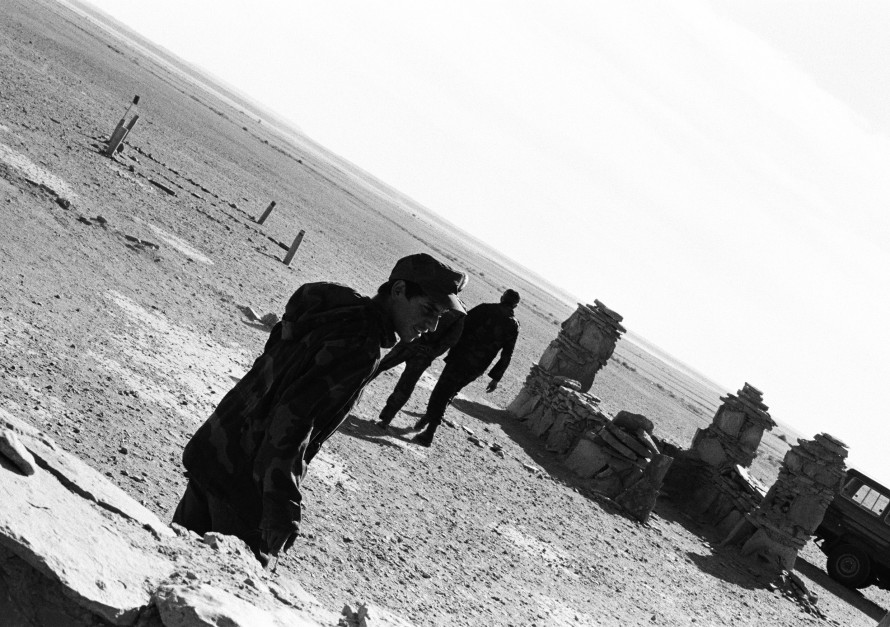
Territoire perdu by Pierre-Yves Vandeweerd
Territoire perdu (Lost Land) by Pierre-Yves Vandeweerd is a very artistic film, shot in black and white on Super-8. In the first part he shows the refugee camps and approaches the border wall in Western Sahara that seals off the desert region occupied by Morocco. The film portrays several refugees in a very poetic, calm way and gets cinematically closer and closer to this wall which one at first only sees from a distance. Territoire perdu explains its purpose through images rather than words.
The Chilean film El mocito (The Young Butler) by Marcela Said and Jean de Certeau takes a similar approach. The film is about a man who worked with the torturers of the Pinochet regime, which you can't really blame him for. He was recruited at 14 and he had practically no choice. But one can't categorise the character clearly as a victim or perpetrator. El mocito observes this man in his battle for recognition. He managed to get hundreds of agents of the system, who were responsible for torture at the time, put behind bars. The film portrays the history of Chile, not just through simple talking heads, but through the observation of the protagonist himself - which sets it apart from conventional politically engaged documentaries.
Returning again to the difference between words and images: Unter Kontrolle (Under Control) by Volker Sattel functions mainly through images...
And in doing so, it's not a simple pamphlet against the nuclear industry, but a soberly described technical utopia, the science fiction of the past century. Unter Kontrolle could be called a science fiction documentary, that depicts an outdated utopia. Volker Sattel simply observes the procedures in the still functioning and decommissioned reactors. It becomes clear what a monstrosity this technology is. And a lot of people considered this monstrosity to be the future - today this utopia seems unbelievably outdated. The viewer is given a chance to make his own judgement - without being taken by the hand.
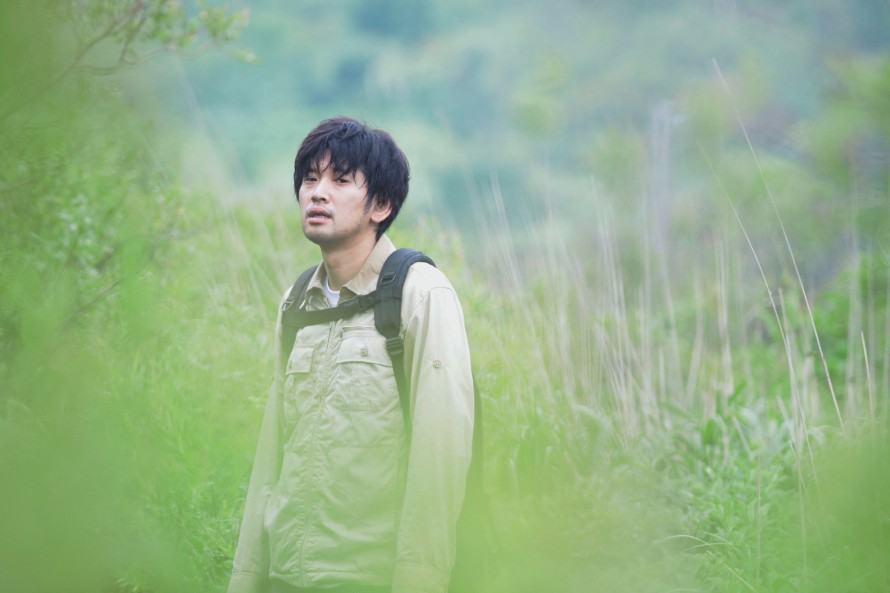
Hasegawa Tomoharu in Heaven's Story by Zeze Takahisa
It would interest me which films are the most remarkable, unusual films, if you look more closely at individual aspects such as the dramaturgy or the sound design.
Day Is Done works with sound very creatively. The film has extraordinary sound work, which is true for many films in the programme. Sound is often neglected in film, and it is often forgotten that the sound creates spaces in the first place. The sound also facilitates the viewer's psychological access to the film and is sometimes more decisive than the image. That is also a criterion while selecting the films.
Looking at this year's programme, the dramatic structures that don't follow the usual three-act or 90-minute blueprint stand out. I find it nice that we have quite a lot of films between 70 and 80 minutes long. It also gets interesting beyond 150 minutes. Such as Heaven’s Story, for example. The director Zeze Takahisa became known as the King of Pink, because he shot low-budget soft-porn movies at the beginning of his career. The genre was the best opportunity for young, ambitious Japanese filmmakers to realise their ideas, since the only pre-condition was to build four or five nude scenes into the film. In the 2011 Forum Zeze is present with an enormous five-hour work. The film weaves together the stories of a dozen main characters and links this to a kind of puppet or mask theatre, that references the Japanese storytelling tradition.
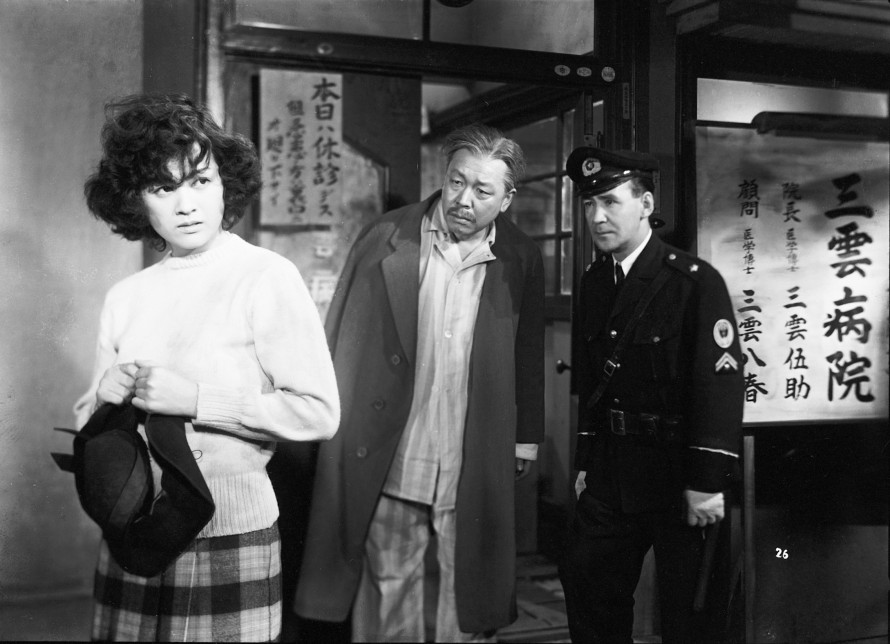
Honjitsu kyushin by Shibuya Minoru
The politics of the festival in the 1960s
Besides the diverse Japanese films in the regular programme, there is also a series devoted to one individual Japanese director. Why should audiences get to know this director?
The problem with festivals until the 1960s was that their selection process wasn't really independent. It worked like this: the respective national film organisations suggested which films should be sent to festivals and then a selection committee made the final decision. Shibuya Minoru, to whom we're dedicating a retrospective in this year's Forum, had the bad luck to not belong to the top two of his production company, who always suggested Keisuke Kinoshita and Yasujirō Ozu, and therefore Shibuya - unjustly - never had a chance. Shibuya was very interested in Japanese customs and Japanese morality - with all its incongruities. For example in the 1962 film Yopparai tengoku (Drunkard's Paradise) which is about alcoholism in a certain class of Japanese white collar workers. Shibuya's films form a chronicle of Japan. They deal with the upheavals after the war and the new family structures that resulted in a transformation of societal ideas in Japan.
In the Special Screenings the picture seems to be similar to last year. With Jonas Mekas and James Benning, big names from the art-film world are once again present. In the case of Himmel und Erde (Heaven and Earth) a film will be screened again and even a multi-part TV movie with the participation of Dominik Graf is in the programme again.
The idea behind Benning's film Twenty Cigarettes - here the length of a cigarette structures the time in the film - isn't a new one in his work, but here it develops its vey own appeal and we didn't want to deny ourselves that. Sleepless Nights Stories by Jonas Mekas, in all its self-irony, is already a kind of happening. We'll be handing out wine in the Arsenal Kino when we show the film, because it will fit well with it.
Michael Pilz' Himmel und Erde was a highpoint of the Berlinale 1983. When it comes to such repeat screenings we naturally profit from restoration work and so the new print was the concrete reason to include the film in the programme. This makes it possible to rediscover a truly extraordinary work. It was always a declared aim of the Forum to share film history, especially when it's not such self-evident history, but the history of films that were created outside of the mainstream.
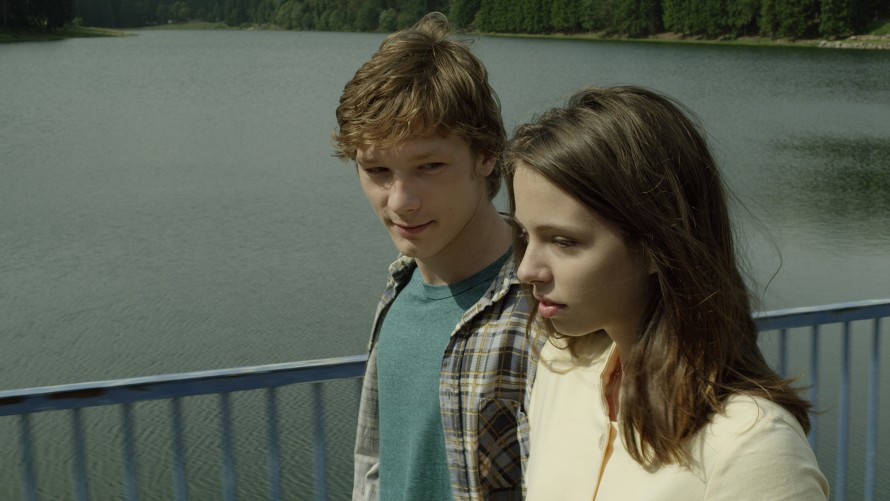
Episode Etwas Besseres als den Tod by Christian Petzold from Dreileben
Dreileben is explicitly concerned with film aesthetics and is therefore predestined for the Forum. The starting point for this film project was for one the discussion about the aesthetics of the Berlin School, to which two of the film's directors - Christoph Hochhäusler and Christian Petzold - feel they belong and otherwise, about film genres, their creation, their function and the fact that there are no specifically German genres. Hochhäusler, Petzold and Dominik Graf have realised their reflections about film aesthetics in a joint project comprising three genre films that all revolve around the same event: the escape of a convict. The three individual works have very different perspectives and styles, and none of the directors have yet seen the films of the others - they'll have that opportunity at the premiere in the Delphi cinema.